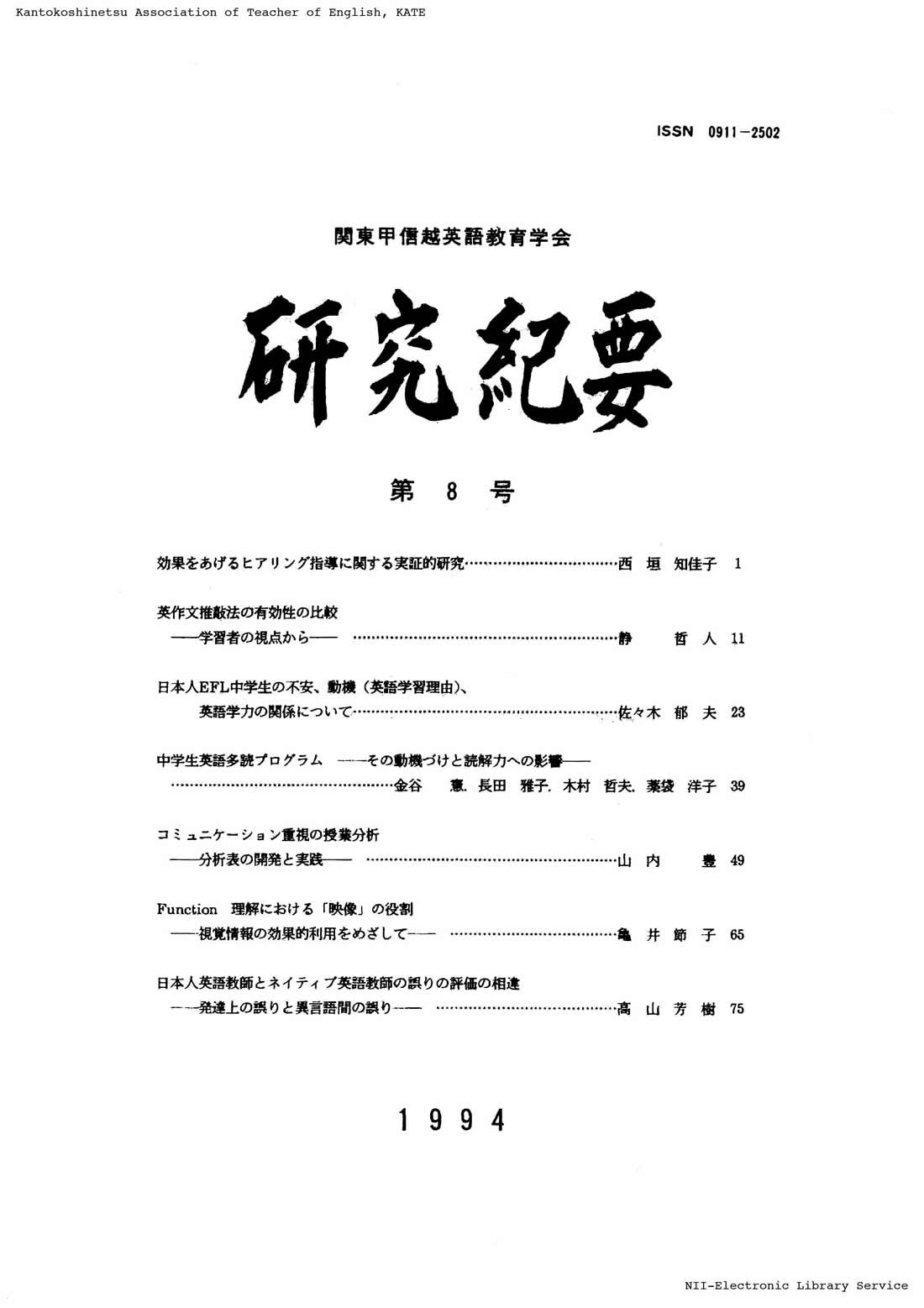Volume 8
Displaying 1-11 of 11 articles from this issue
- |<
- <
- 1
- >
- >|
-
Article type: Cover
1994 Volume 8 Pages Cover1-
Published: March 01, 1994
Released on J-STAGE: July 14, 2017
Download PDF (30K) -
Article type: Cover
1994 Volume 8 Pages Cover2-
Published: March 01, 1994
Released on J-STAGE: July 14, 2017
Download PDF (30K) -
Article type: Article
1994 Volume 8 Pages 1-9
Published: March 01, 1994
Released on J-STAGE: July 14, 2017
Download PDF (677K) -
Article type: Article
1994 Volume 8 Pages 11-22
Published: March 01, 1994
Released on J-STAGE: July 14, 2017
Download PDF (679K) -
Article type: Article
1994 Volume 8 Pages 39-47
Published: March 01, 1994
Released on J-STAGE: July 14, 2017
Download PDF (695K) -
Article type: Article
1994 Volume 8 Pages 49-64
Published: March 01, 1994
Released on J-STAGE: July 14, 2017
Download PDF (1028K) -
Article type: Article
1994 Volume 8 Pages 75-85
Published: March 01, 1994
Released on J-STAGE: July 14, 2017
Download PDF (691K) -
Article type: Appendix
1994 Volume 8 Pages App1-
Published: March 01, 1994
Released on J-STAGE: July 14, 2017
Download PDF (35K) -
Article type: Appendix
1994 Volume 8 Pages App2-
Published: March 01, 1994
Released on J-STAGE: July 14, 2017
Download PDF (35K) -
Article type: Cover
1994 Volume 8 Pages Cover3-
Published: March 01, 1994
Released on J-STAGE: July 14, 2017
Download PDF (38K) -
Article type: Cover
1994 Volume 8 Pages Cover4-
Published: March 01, 1994
Released on J-STAGE: July 14, 2017
Download PDF (38K)
- |<
- <
- 1
- >
- >|
